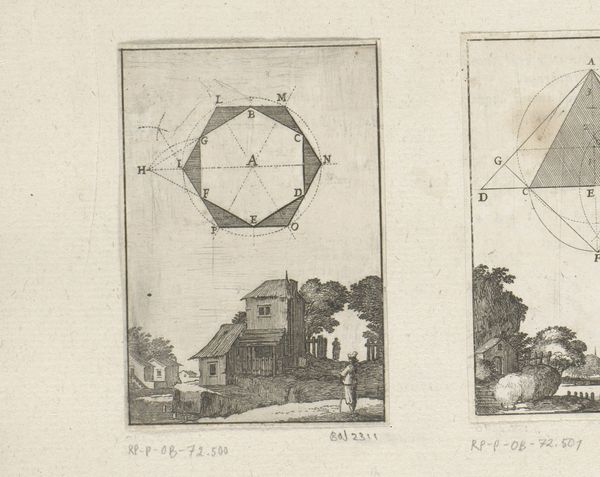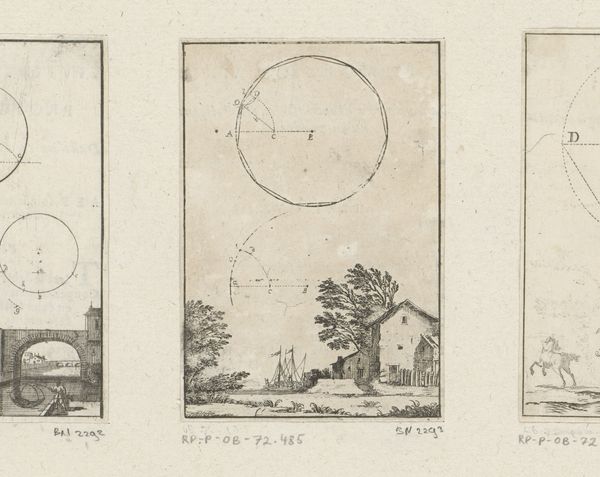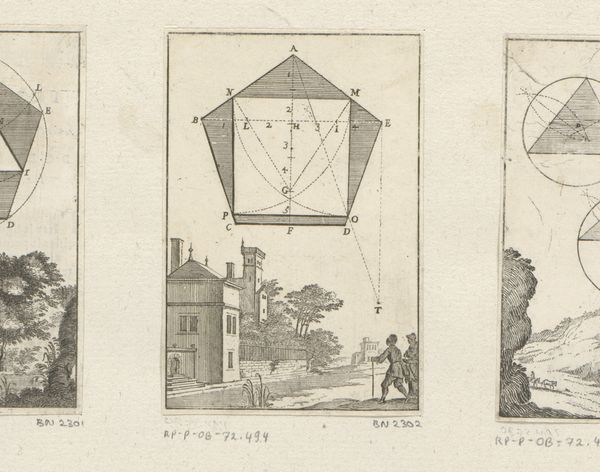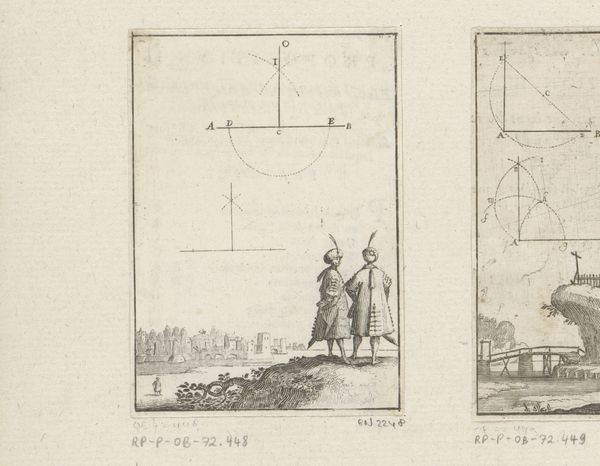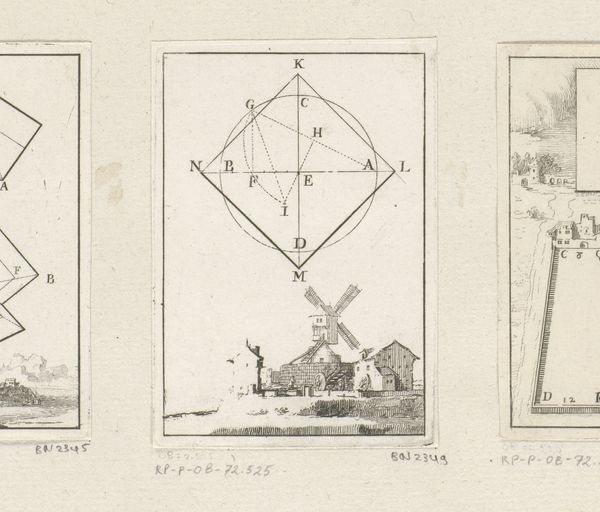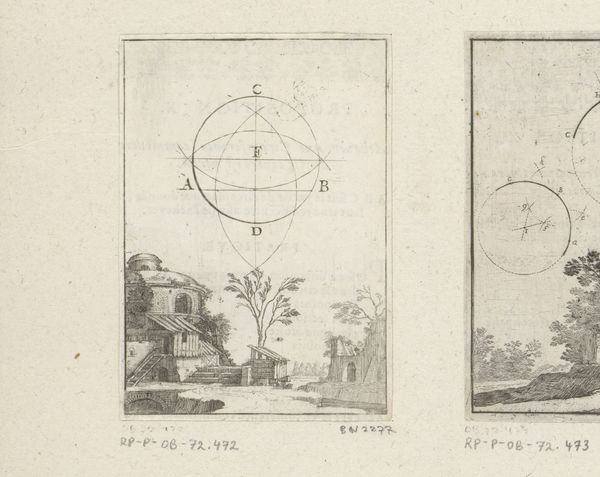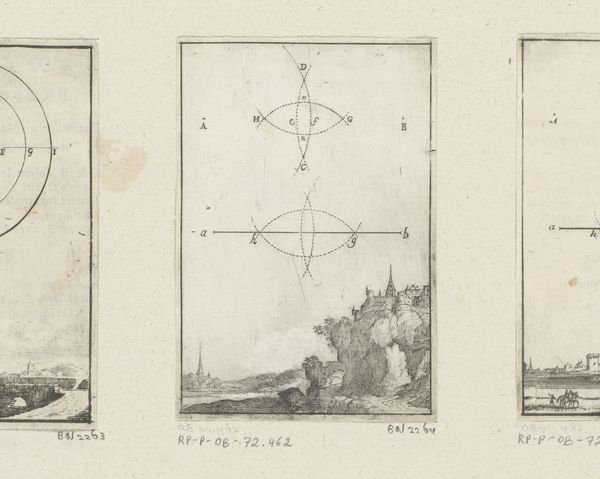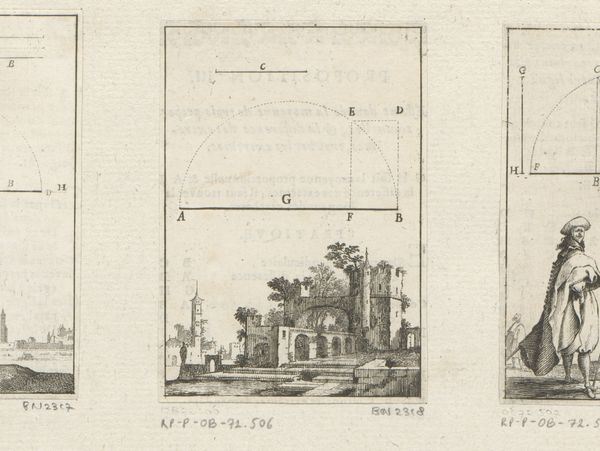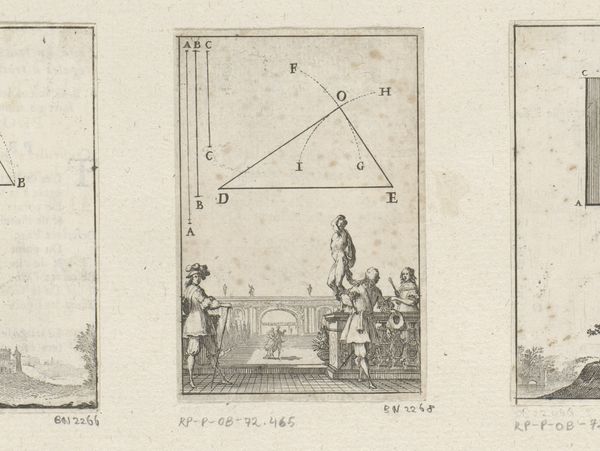
Delen van een rechte gegeven lijn met onderaan een dorpsgezicht 1669
0:00
0:00
sebastienleclerci
Rijksmuseum
print, engraving, architecture
#
baroque
# print
#
old engraving style
#
landscape
#
geometric
#
history-painting
#
engraving
#
architecture
Dimensions: height 93 mm, width 65 mm
Copyright: Rijks Museum: Open Domain
Curator: We’re looking at "Delen van een rechte gegeven lijn met onderaan een dorpsgezicht," which translates to "Parts of a Straight Line Given with a Village View Below," created by Sébastien Leclerc I in 1669. It's an engraving currently held at the Rijksmuseum. Editor: Immediately, I'm struck by this unusual juxtaposition of precise geometric diagrams and a pastoral village scene. There's something almost dreamlike about it. The lines are very fine, crisp and purposeful; they overlay this seemingly real landscape. It’s… jarring, yet fascinating. Curator: Leclerc was very interested in how things are made. Considering the period, engraving itself was a meticulously planned endeavor, almost mathematical in its execution. Think about the tools required, the societal investment in making printed imagery, how it democratized certain knowledge. The very nature of its materiality speaks of a transition into modernity. Editor: Absolutely. The straight lines and geometric forms were symbolic of reason and order, virtues celebrated in the Baroque era. The village view—a depiction of daily life, the architecture—these become embedded with greater symbolic weight. Curator: That’s an interesting point, as the scenes provide grounding – Leclerc combined industry and the rise of a certain artisan and industry with those precise geometric lines; to depict daily life or new perspectives and techniques for creating art. The image depicts how the craftsperson fits into the town landscape. Editor: It feels allegorical. The diagrams themselves could represent abstract principles, perhaps mathematical truths governing the world, with the village scenes acting as visual metaphors of these ideals manifesting in human life. We have domestic life alongside clean geometry that makes sense with the buildings' architecture. This almost classical take represents a stable, well built and ordered community. Curator: This connects with larger societal shifts – growing trade, artisanal production – transforming the experience and image of art, beyond decoration. It seems almost diagrammatic of these social contexts that allowed engravers like Leclerc to be innovative as a craftsman. Editor: Reflecting on the artwork, the way these disparate elements interact, it encourages to question, in new lights, which we find important in human understanding. Curator: Yes, an engraving originally designed to teach geometry shows to us that our perspective informs a much broader understanding of any given period or scene.
Comments
No comments
Be the first to comment and join the conversation on the ultimate creative platform.
